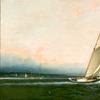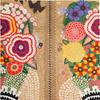Featured 19th Century Painter: William Hubacek (American 1866 - 1958)
- March 15, 2021 07:36
William Hubacek was born in Chicago, Illinois; however, his parents brought him to San Francisco, California as a young child. He started painting at age 12 and studied at the Mark Hopkins Institute (now the San Francisco Institute of Art) under Raymond Dabb Yelland (1848–1900), Arthur Mathews (1860–1945), and Amédée Joullin (1862–1917). His first studio was in San Francisco’s Mission District, where still-life painter, Samuel Marsden Brookes, also had a studio. It is likely that Hubacek would have known still-life painters Samuel Marsden Brookes and Soren Emil Carlsen, the director of the San Francisco School of Design. After continuing his art training in France, Germany, and Italy, he returned to San Francisco and taught at the Mark Hopkins. A portion of his early work was lost when the Hopkins and his studio were destroyed in the earthquake and fire of 1906. In 1938, artist William Hubacek moved to San Bruno, where he continued to paint and teach. He was the “Old Master” to his many students. He is best known for his “delicately tinted landscapes and completely detailed still-lifes” (San Mateo Times, 1958). Shortly before his death at age 92, 19th century artsit William Hubacek stated that “My painting is only for my own amusement; I’ve been painting for years because I like to paint.” Hubacek was a member of the Peninsula Art Association and was appointed to their Board of Governors in 1952. He exhibited at the California State Fair (1892 – 99); the San Francisco Art Association (1893 – 1906); World’s Columbian Exposition (Chicago, 1893); California Midwinter International Exposition (1894); Pacific Exposition (San Francisco, 1915); Golden Gate International Exposition (San Francisco, 1939); New York World’s Fair (NYC, 1939); Panama; San Mateo County Fairs and the San Bruno Public Library.











_-Closing-the-Distance_100x100_c.jpg)









